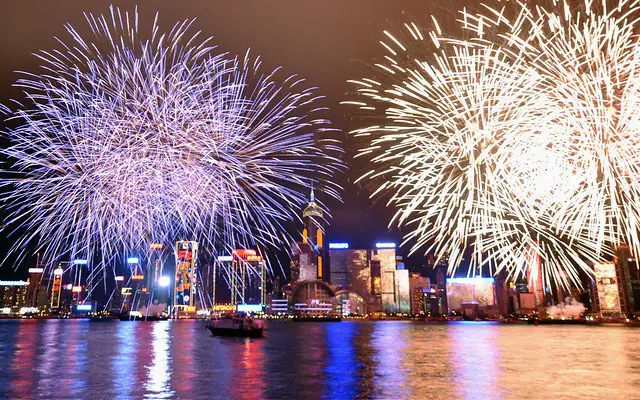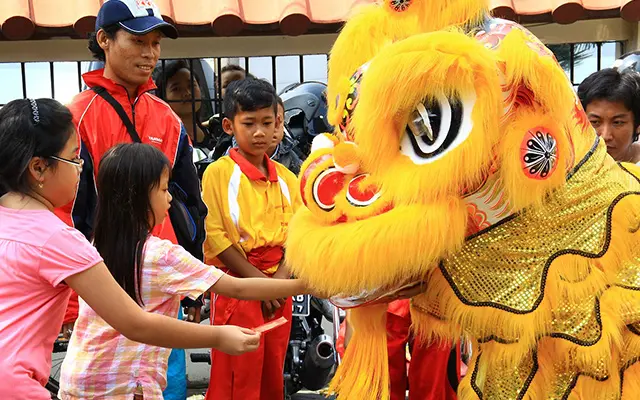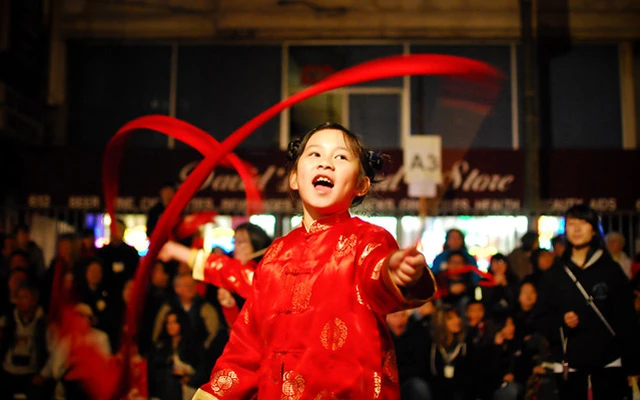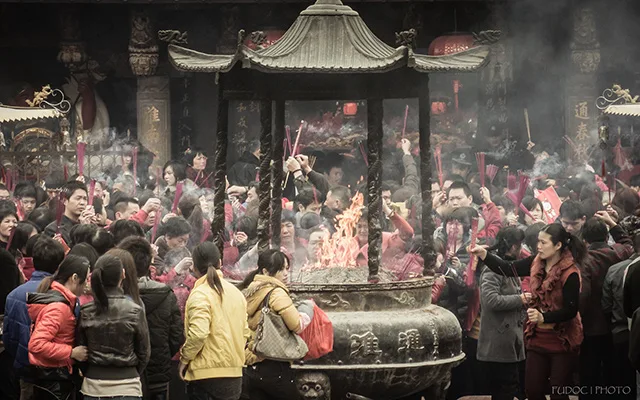What is the Chinese New Year?
Learn about the fundamental elements, the ancient origins and the significance of the famous Chinese «Lunar» New Year.
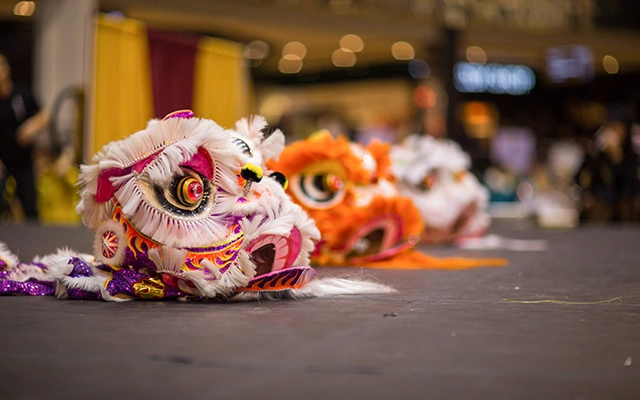
A major festival of the Chinese calendar
Also Called
- Lunar New Year
- Chinese Spring Festival
The Chinese New Year festival is the longest and the most important among the celebrations in China. Since the festival is tied to the Chinese lunar calendar, it is a movable celebration, starting on the first day of the first month of the traditional Chinese calendar. In terms of the Gregorian western calendar, it occurs sometime between January the 21st and February the 20th on each year.
It is a public holiday, highly related to traveling in order to celebrate, rest and meet up family members. The celebration lasts for 15 days. It starts at the Festival’s Eve and ends on the 15th of the first month of the Chinese calendar with the Lantern Festival. The 4000-year history the festivity includes a vast variety of rituals and customs which represent the diversified folklore aspects of Chinese tradition.
Central elements of the Chinese New Year
By approaching the definitional characteristics of the Chinese New Year someone gets a clear picture of the complexity and the profoundness of the Chinese tradition. The routes of the festival have aspects related to history, myths, religion as well as superstitions and knowledge of the solar system principals. All those are coming together and construct a festivity that is synonymous to the deeper identity of this huge country. A closer look at the origins of the feast reveals the fundamental role of the moon, the harvest and the mythology to the Chinese culture.
Lunisolar origins
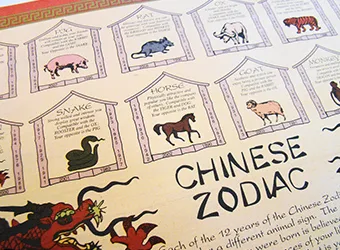
Contrary to the Gregorian calendar that is related to solar movements the Chinese calendar has a lunisolar orientation. Thus, the dates are indicated both in relation to the phase of the moon as well as to the solar solstices and equinoxes.
The Chinese Zodiac is also a part of the Chinese calendar. The “signs” represent a cycle of 12 stations on the path of the sun through the cosmos. Each new year receives the name of one of the 12 zodiac animals which are: rat, ox, tiger, rabbit, dragon, snake, horse, sheep, monkey, rooster, dog and pig.
The opposing but complementary principles of yin and yang play also a significant role at the calendar contributing to the harmonious world.
Spring Festival & Harvest
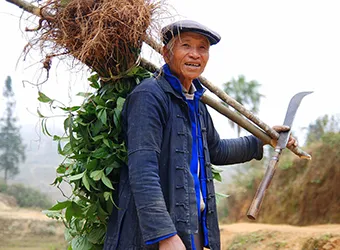
At the biggest part of the Chinese mainland, the New Year Festival is mostly named as “Spring Festival”.
This may sound strange, given that the festival takes place during the winter (range between the 21st of January and the 20th of February). The explanation is that this is a festival that looks forward to spring.
According to Chinese historical documents, the end of each year was the time for farmers to review their harvest results and set the expectations for a rich harvest for the upcoming year. Furthermore, after the reinstatement of the traditional Chinese New Year in 1996, the official government used the term Spring Festival while referring to the celebration across the country.
Mythology
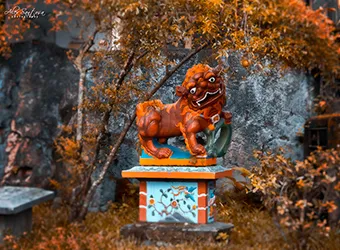
According to folklore myths and legends, people were suffering from a beast named Nian which once per year, at the New Year period was attacking and eating the children of their village.
One year when the villagers were leaving their houses in order to hide from the beast and old man appeared and informed them that he would stay back in order to defend the village and revenge the beast.
The day after, when the villagers returned, they realized that the beast’s attack was prevented. The old man (probably deity) had used the red color, big bonfires, and firecrackers to defend the village. From that time the villager would use the same weapons to confront the beast.
The above reveals the origin of some of the basic symbols and traditions of the Chinese New Year. Those are: wearing red clothes, hanging red lanterns and red spring couplets on windows and doors as well as setting bonfires and firing firecrackers started to be the symbols of the Chinese New Year.
Symbolism
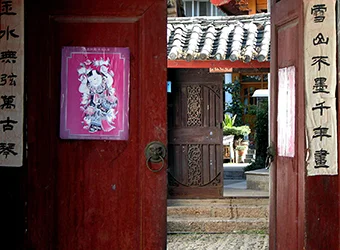
In Chinese culture, the symbolic meanings deriving from words, sounds, and colors are very significant.
Many of the New Year’s habits and traditions are highly related to this approach.
The red color apart from a symbolic weapon that defeats the beast Nian symbolizes prosperity too. The reason is that the sound of the word red in Mandarin is homophonous to the sound of the word prosperous. Therefore red, as an auspicious color is used in all types of decoration, even food during the festival.
Similar to that, Mandarin-speaking houses tend to hang upside down characters of the word blessing (fu) since then the characters’ sound becomes similar to the word arrive, giving the meaning “arrival of blessing / good luck” in the house. On the other hand, this is not happening in Cantonese-speaking areas since the acoustic of the same character turns to symbolize bad luck.

What is the significance of Chinese New Year?
The festivity includes some religious aspects with ceremonies that honor heavenly, earth and household deities as well as the ancestors and other gods. A series of traditions, regional customs, and superstitions add to the folklore essence of the festival. It is regarded as an occasion for family gatherings, common dinners, and celebrations as well as a break from the hectic pace of everyday life. Peculiar decorations, firework events, and habits like a thorough house-cleaning (prior to the feast) are related to perceptions of chasing the bad spirits and bringing good luck.
Buddhism, while having a great effect on China did not in any basic way change the patterns of beliefs. It could only dig itself in by itself changing.
At 1949 under the rule of the Chinese Communist Party leader Mao Zedong, the government prohibited the celebration of the traditional Chinese New Year and adopted the western New Year celebration of the 1st of January. At the end of the 20th century, Chinese leaders were more willing to accept this tradition and finally, a week-long vacation has been introduced in correspondence to the celebration. Today, the Lunar New Year is probably the most significant and highly anticipated event in the Chinese society.
